
Indicator scoreboard
EMU - Third quarter real gross domestic product rose 0.3 percent and was up 0.8 percent when compared with last year. The quarterly increase in third quarter GDP was due in large part to gains in private consumption. Investment spending was flat on the quarter, but this was a strong improvement from the sharp declines posted in the previous three quarters.

October seasonally adjusted unemployment rate rose to 8.4 percent from 8.3 percent in September. Of the nine countries reporting data, unemployment rose in four, fell in one and remained unchanged in four. In October 2002, it is estimated that 11.6 million men and women were unemployed.

October industrial producer prices rose 0.2 percent and were up 0.9 percent on the year. Energy goods prices rose 0.9 percent and 1.6 percent on the year. Excluding energy, industrial PPI was unchanged on the month but up 0.9 percent when compared with last year. Prices for capital goods, non-durable consumer goods, intermediate goods and durable consumer goods all remained unchanged from September.

September real seasonally and workday adjusted retail sales fell 2.1 percent and were down 0.6 percent when compared with last year. All retail sales categories declined, led by textiles, clothing and footwear. Household goods also declined as did food, drinks and tobacco as well as pharmaceutical and medical goods.

November seasonally adjusted Reuters purchasing managers manufacturing index contracted for the third month in a row, remaining under the 50 percent breakeven level. The PMI however, contracted at a slower pace and rose to 49.5 from 49.1 in October thanks to improvements in new orders, employment, delivery times and stocks of purchases.
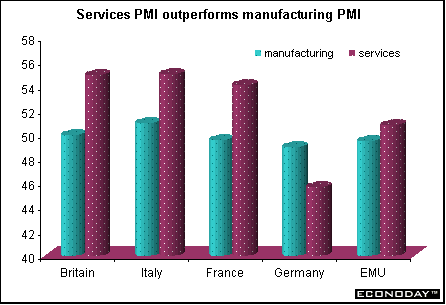
November seasonally adjusted Reuters purchasing managers' services activity index expanded slightly in November after stagnating in October, as growth in most large economies offset the ongoing slump in Germany. The PMI index climbed to 50.8 from 50.1.
Germany - November seasonally adjusted unemployment rose by 35,000. Unemployment rose by 26,000 in east Germany after falling by 2,000 in October, while in west Germany, unemployment rose 9,000 after jumping by 28,000 in October. The seasonally adjusted employment rate rose to 10.0 percent from 9.9 percent in October. Pan-German job vacancies declined by 10,000 in November after an 11,000 drop in the previous month.
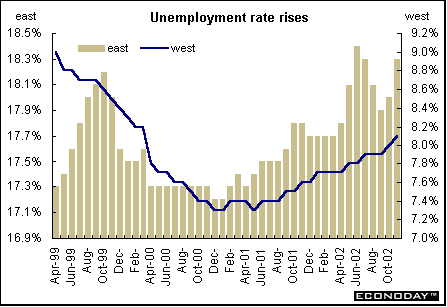
October real seasonally and calendar adjusted retail sales including auto dealerships and petrol stations rose 0.1 percent but were down 0.1 percent on the year. Sales excluding auto dealerships and petrol stations sank 1 percent and 0.9 percent on the year.
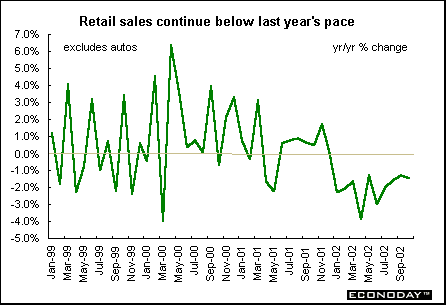
October manufacturing orders rose 1.1 percent, offsetting the 1.0 percent decline posted in September thanks to an above average number of big ticket item orders. Orders rose 0.9 percent in west Germany and 3.1 percent in east Germany. Orders for consumer goods, both durable and nondurable, rose along with investment goods orders. Domestic orders rose 1.5 percent while foreign orders rose 0.6 percent.

Britain - November Chartered Institute of Purchasing and Supply purchasing managers' manufacturing index slipped to 50.0 from 50.6 in October, the lowest level in 4 months. A figure above 50 indicates the sector is growing and a figure below 50 shows manufacturing contracting. A decline in output was offset partially by a rise in overall new orders.
November Chartered Institute of Purchasing and Supply business activity index fell to 54.9 in November from 55.6 in October. While this was the lowest level since July, the index remains above the average for the year to date. The decline was led by an easing in the pace of growth of incoming new business.
November seasonally adjusted Nationwide house price index jumped 2.0 percent and soared 25.5 percent when compared with last year. Concerns have been mounting among members of the Bank of England's Monetary Policy Committee about the high level of house-price growth.

November seasonally adjusted Halifax house price index rose 1.4 percent on the month and 29.2 percent on the year as the combination of low interest rates and low unemployment, and a persistent shortage of properties available for sale, has maintained the upward pressure on prices. Halifax said the continuing strength of the housing market is underpinned by the number of property transactions, which has been running at its highest level since 1989.
Asia
Australia - Third quarter seasonally adjusted real gross domestic product jumped 0.9 percent and 3.7 percent when compared with the same quarter last year. Second quarter GDP growth was revised upward to 0.8 percent from 0.6 percent. Stronger consumer spending, business investment and a residential construction boom all contributed to the increase. Household spending rose 0.4 percent, dwelling investment increased 3.3 percent, and business investment increased 2.9 percent. An El Nino-induced drought, which is described as the most extensive in a century, has slashed grain and cotton crops, cut wool and milk production and caused cattle prices to tumble. Summer crop production will be the lowest in 20 years, the government commodity forecaster said this week.
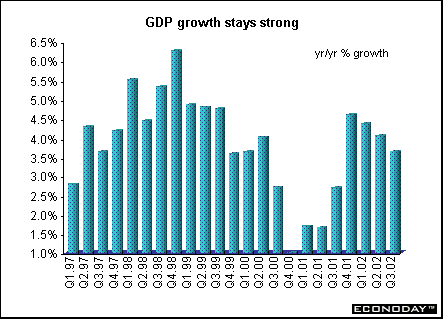
Americas
Canada - November unemployment rate slipped to 7.6 percent from 7.7 percent a month earlier. Employment rose by an estimated 42,300, all in full-time work. Full-time employment grew by 55,300 after edging down over the previous two months, while part-time employment fell by 12,900. The participation rate rose to 67.3 percent, the highest rate in more than 12 years. Manufacturing employment rose by 33,000 jobs, all in full-time. Construction employment fell by 16,000, the first decline in seven months.
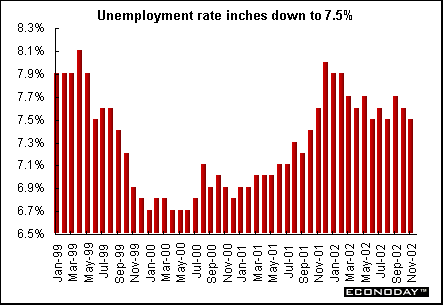


Last Week's Highlights • Global
Stock Market Indexes • Recap of Global Markets
• Currencies • Indicator
Scoreboard

The Bottom Line •
Looking Ahead
| ![[Back To Archive]](../../../images/backtoarchive.gif)